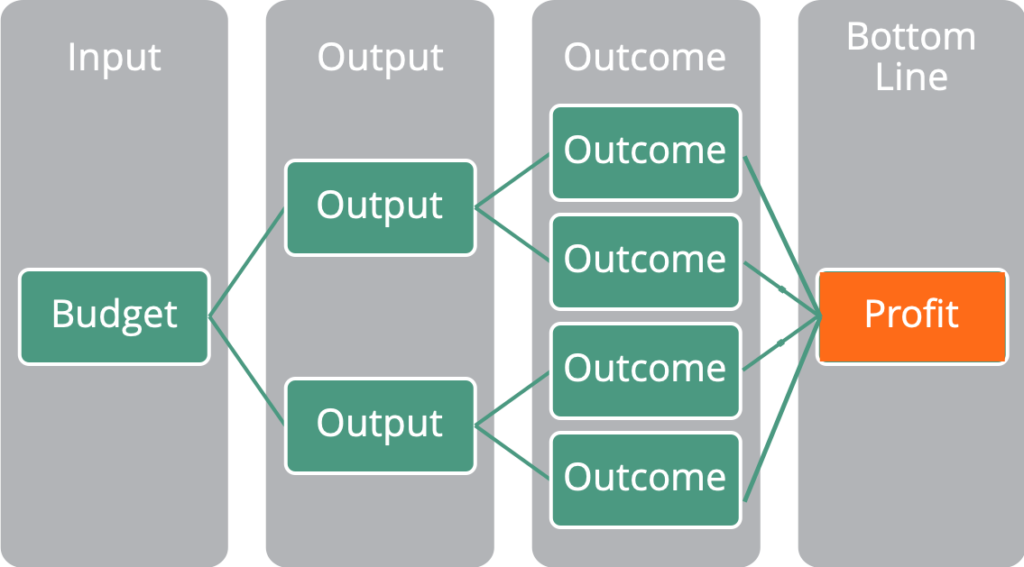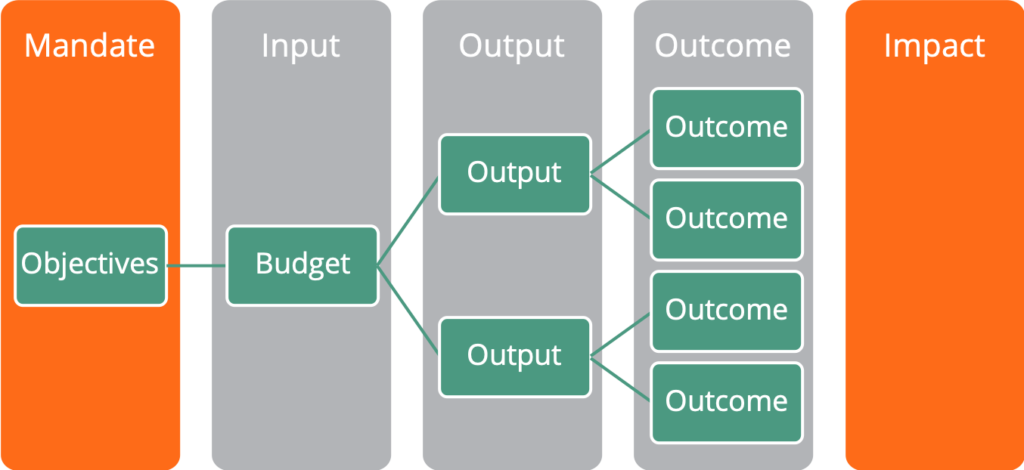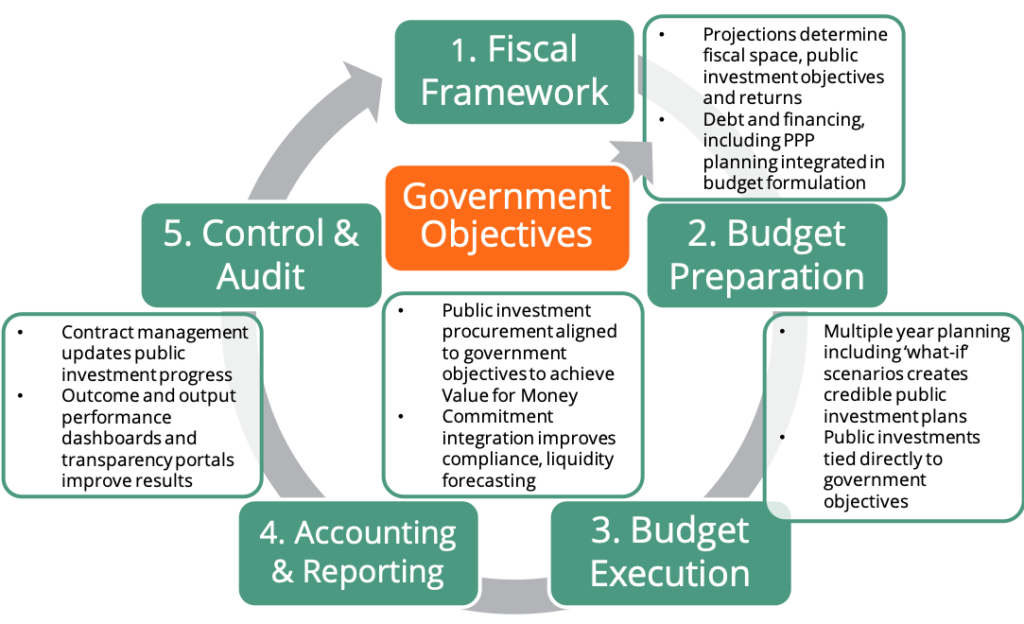How to Achieve Value for Money in Government FMIS Procurement
This is the third in a series about improving government FMIS tenders:
- How to Improve FMIS Tenders
- Gateway Requirements for Effective FMIS Tenders
- Value for Money in FMIS Procurement
What is V4M?
V4M (Value for Money), is in many ways, the public sector equivalent of ROI (Return on Investment). Businesses have a bottom line: profit and loss. This means that returns (profit or loss) can be calculated based on input (cost). Other performance measures can also be tracked to the bottom line.

However, there is no bottom line in the public sector. Governments have mandates.
Governments seek to optimize outputs, outcomes and impact. Value for Money provides a methodology for doing so.

Like many government performance management concepts, such as results-based budgeting, V4M has evolved to include 5 Es.

What is Value for Money/V4M?
Value for Money / V4M is a strategic concept that applies to complex procurement and the entire performance lifecycle including:
- Economy: low unit costs, similar to the spend management concept, such as the cost to acquire vaccines
- Efficiency: productivity of turning costs into outputs, such as the cost to deliver an inoculation
- Effectiveness: the value of turning outputs to outcomes, such as the cost to reduce a disease by 1%
- Cost effectiveness: delivery impact value, such as the cost to increase 1 year of life expectancy
- Equity: impact to groups, for example, whether this increase in life expectancy was shared by disadvantaged groups
V4M is particularly important for public investments.
An FMIS acquisition is transformational and a key public investment. Spend management in procurement through competition, quantity bids and framework agreements are sufficient for commodity acquisition.

V4M is a critical part of public investment management across government budget cycles.
What is the Problem With Value for Money/V4M?
Lowest Cost Trap
Government FMIS procurement methods usually include a form of V4M – a formula is provided that combines price with value concepts. However, as John Glenn the astronaut famously said, the lowest price is not necessarily the best value.
“I felt exactly how you would feel if you were getting ready to launch and knew you were sitting on top of 2 million parts — all built by the lowest bidder on a government contract.”
The problem with many V4M calculations is the use of generic formulas that are not tied to priorities. These generic formulas include percentages associated with team resumes, references, desirable features, and understanding needs. These are often associated with every large turnkey information technology acquisitions.
These are very poor proxies for the ability of vendors to deliver value. Gateway requirements are more effective at predicting value, particularly when these address the post-implementation value.
Documentation Obsession
Some government and donor procurement methods use a different extreme. These tenders request academic documents covering value concepts.
FreeBalance once contracted experts in these kinds of tenders for a large opportunity. We wrote a section of about five pages using good business writing skills with clear short sentences, point form, and simple language. It’s the kind of thing that grammar check software helps with. The experts told us that the section was clear and well written, but would not be ranked highly. Sentences needed to be extended. Academic concepts inserted. All point form moved to narrative. Fewer conceptual diagrams. Less white space.
Clarity in how vendors align to project and government objectives is far more important than going through a documentation ceremony. However, vendors need to be able to articulate their V4M method and past results.
How to Get V4M Right
Effective government procurement can improve value for money. Experts suggest that 20% improvement in V4M is realistic. The important thing to realize is that V4M is something that happens in the long term. The performance cycle of inputs to processes to outputs to outcomes to impact takes time. That’s why Medium-Term Expenditure Frameworks (MTEFs) use 3 to 5 year windows to build and track results-based budgets.
This makes post-implementation V4M critical – what we call sustainability. This includes:
- Maintainability: extent to which government professionals can maintain and upgrade FMIS systems
- Capacity building; extent to which government capacity can be built, maintained, and improved to support future PFM reform
- Self-sufficiency: extent to which governments can avoid hiring expensive consultants for operational functions, upgrades, and reform
- Affordability: extent to which government technology costs for additional users, new functions and upgrades can be minimized
- Portability: extent to which FMIS systems can move to different middleware and cloud infrastructures
- Adaptability: extent to which governments can set reform priorities without experiencing limitations and technical debt (typically because of customization and bespoke designs)
For more information on how FreeBalance’s solutions deliver V4M please get in touch.
